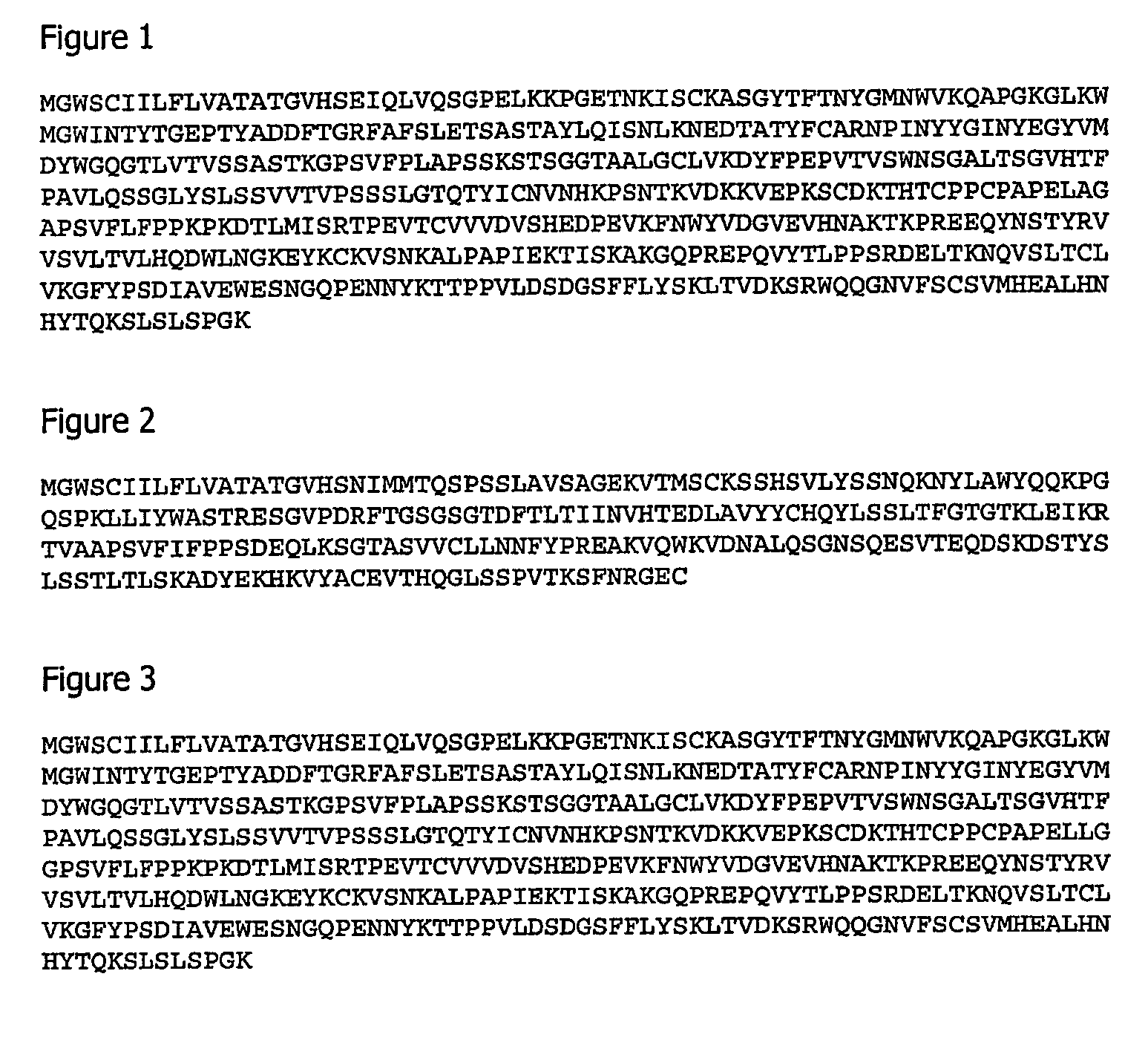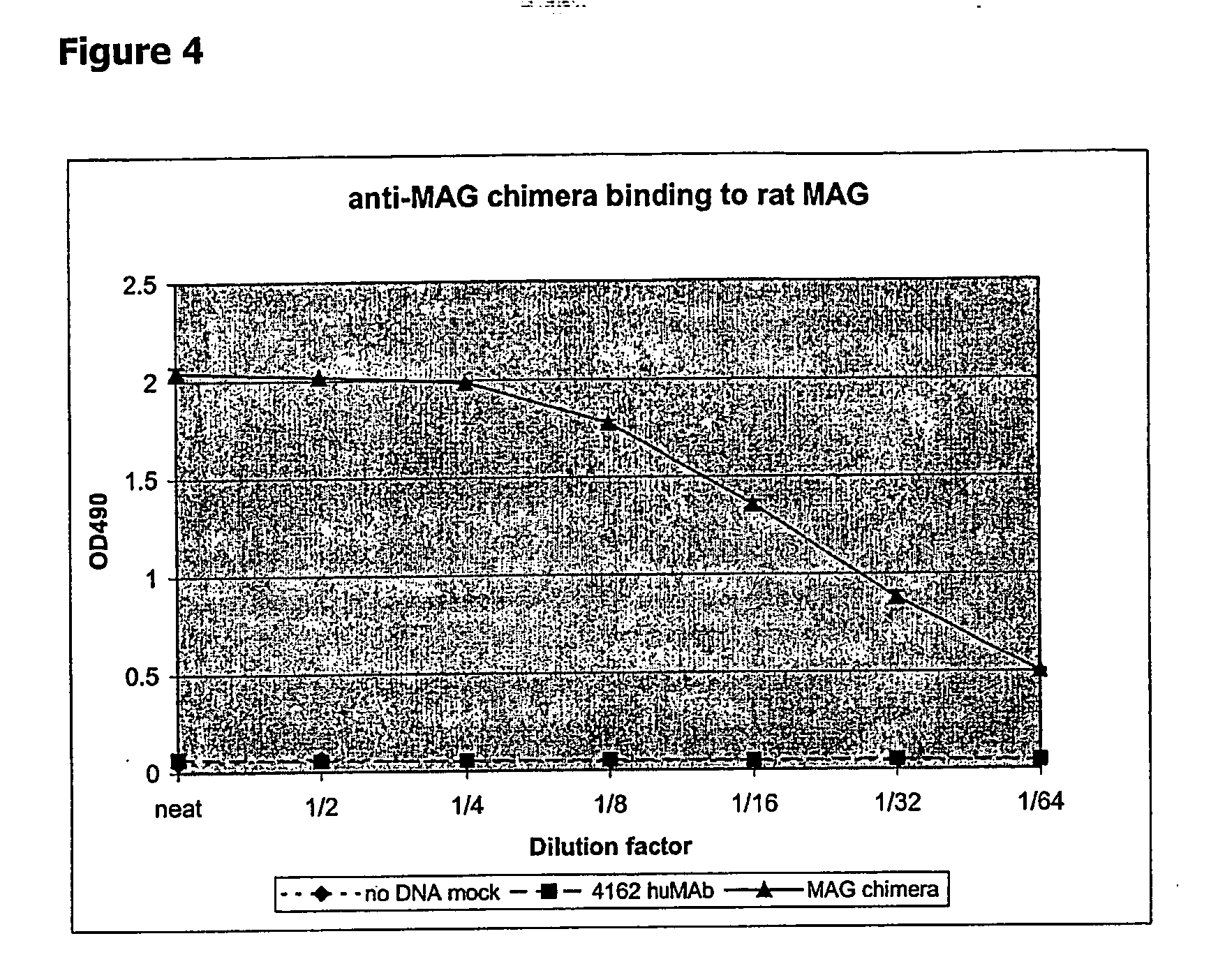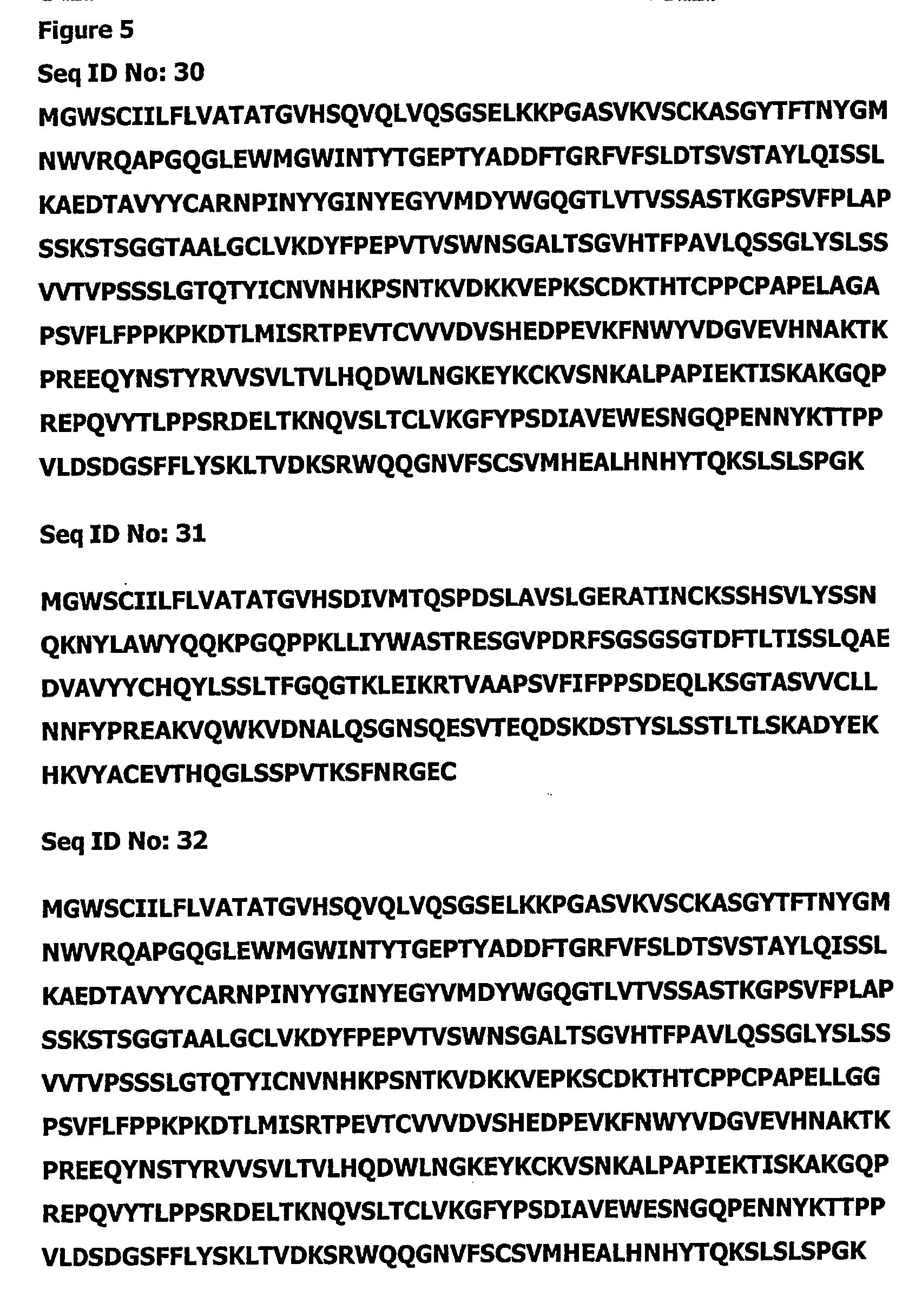Antibodies
a technology of antibodies and antibodies, applied in the field of antibodies, can solve the problems of dose-limiting side effects, strategies that have not been tested, and have failed to achieve clinical trials, etc., and achieve the effects of inhibiting neurodegeneration, promoting functional recovery, and inhibiting neurodegeneration
- Summary
- Abstract
- Description
- Claims
- Application Information
AI Technical Summary
Benefits of technology
Problems solved by technology
Method used
Image
Examples
example 1
Anti-MAG Antibody in Stroke Model
Materials and Methods
Anti-MAG Monoclonal Antibody
[0145] Anti-MAG monoclonal antibody was mouse anti-chick MAG antibody MAB 1567 obtained from Chemicon. The antibody has the following characteristics:
[0146] Antigen: myelin-associated glycoprotein (human, mouse, rat, bovine, chick, frog)
[0147] Isotype: IgG1
[0148] Neutralising ability: see DeBellard et al (1996) Mol. Cell Neurosci. 7, 89-101; Tang et al (1997) Mol. Cell. Neurosci. 9, 333-346; Torigoe K and Lundborg G (1997) Exp. Neurology 150, 254-262.
[0149] Control IgG1 mab was purchased from R+D Systems.
Intra-Cerebral Ventricular Cannulation (for Study 1 Only)
[0150] Under halothane anaesthesia intra-cerebral ventricular (i.c.v.) cannulae were positioned in the left lateral cerebral ventricle (coordinates: 1.6 mm from the midline, 0.8 mm caudal from bregma, 4.1 mm from skull surface, incisor bar—3.2 mm below zero according to Paxinos and Watson, 1986) All rats were singly housed to avoid da...
example 2
[0170] Altered antibodies include chimeric antibodies which comprise variable regions deriving from one species linked to constant regions from another species. Examples of mouse-human chimeric anti-MAG immunoglobulin chains of the invention are provided in FIGS. 1, 2, and 3. Mouse-human chimeras using human IgG1, IgG2, IgG3, IgG4, IgA, IgE, IgM, IgD constant regions may be produced, as may chimeras associating the mouse variable regions with heavy or light chain constant regions from non-human species.
[0171]FIG. 1 (Seq ID No. 27) provides the amino acid sequence of a chimeric immunoglobulin heavy chain in which the murine anti-MAG heavy chain variable region is associated with a functional immunoglobulin secretion signal sequence, and with an altered form of the human IgG1 constant region, in which Kabat residues 248 and 250 have been mutated to alanine in order to disable the effector functions of binding to FcγRI and complement protein C1q (Duncan, A. R. and Wi...
example 3
Chimeric Antibody Binds to Rat MAG in ELISA
[0175] Chimeric anti-MAG antibody containing the light and heavy chain CDRs of the invention was produced by transient transfection of CHO cells. For this, Transfast transfection reagent (Promega; E2431) was used and transfections carried out according to manufactures instructions. In brief, ˜106 CHO cells were plated out per well of 6-well culture plates. The following day mammalian expression vector DNA encoding the appropriate heavy or light chain were mixed at 1:1 ratio (5 μg total DNA) in medium (Optimem1 with Glutamax; Gibco #51985-026). Transfast transfection reagent was added and the solution transferred to wells with confluent cell layers. After 1 h at 37° C. in the cell incubator, the DNA / Transfast mixture was overlaid with 2 ml Optimem medium and left for 48-72 h in the incubator. Supernatants were harvested, cleared by centrifugation and passed through 0.2 μm filters. Antibody concentration in CHO cell culture supernatant was d...
PUM
| Property | Measurement | Unit |
|---|---|---|
| Fraction | aaaaa | aaaaa |
| Volume | aaaaa | aaaaa |
| Volume | aaaaa | aaaaa |
Abstract
Description
Claims
Application Information
 Login to View More
Login to View More - R&D
- Intellectual Property
- Life Sciences
- Materials
- Tech Scout
- Unparalleled Data Quality
- Higher Quality Content
- 60% Fewer Hallucinations
Browse by: Latest US Patents, China's latest patents, Technical Efficacy Thesaurus, Application Domain, Technology Topic, Popular Technical Reports.
© 2025 PatSnap. All rights reserved.Legal|Privacy policy|Modern Slavery Act Transparency Statement|Sitemap|About US| Contact US: help@patsnap.com



